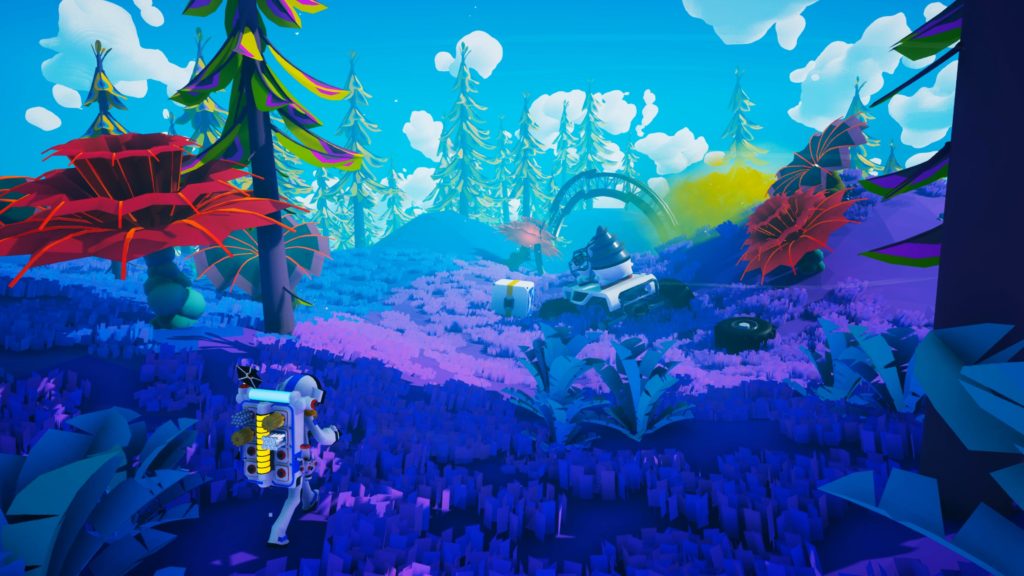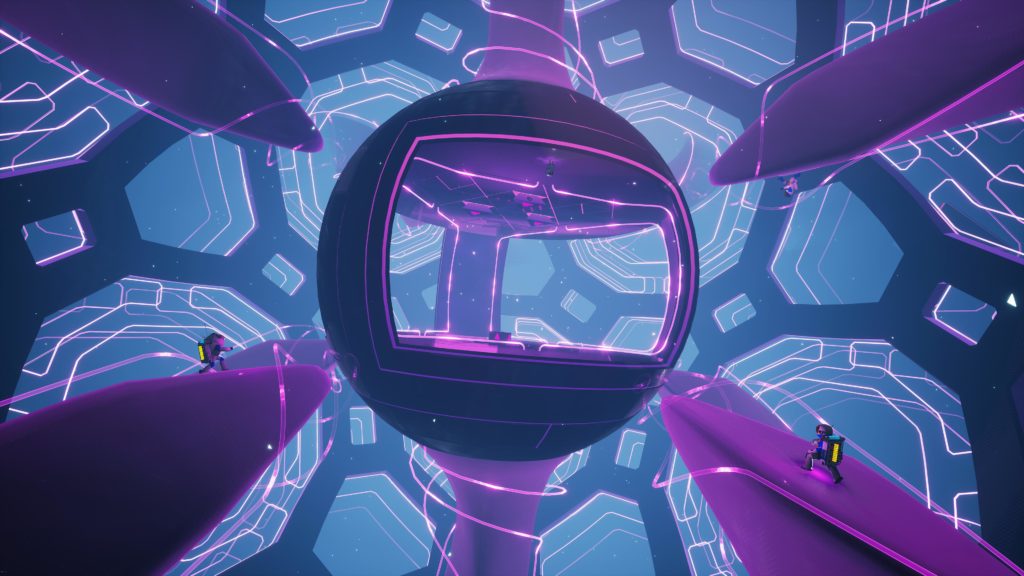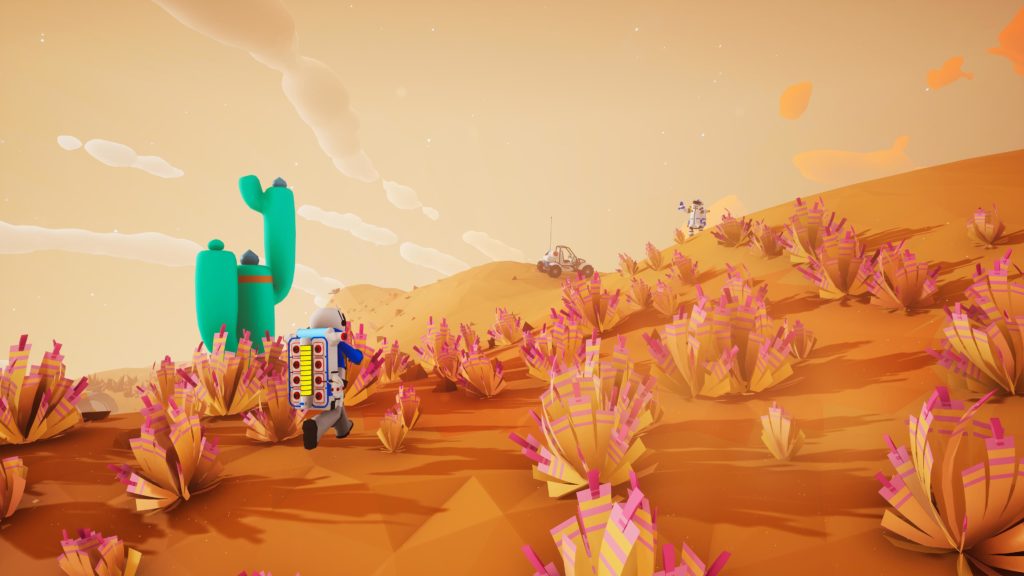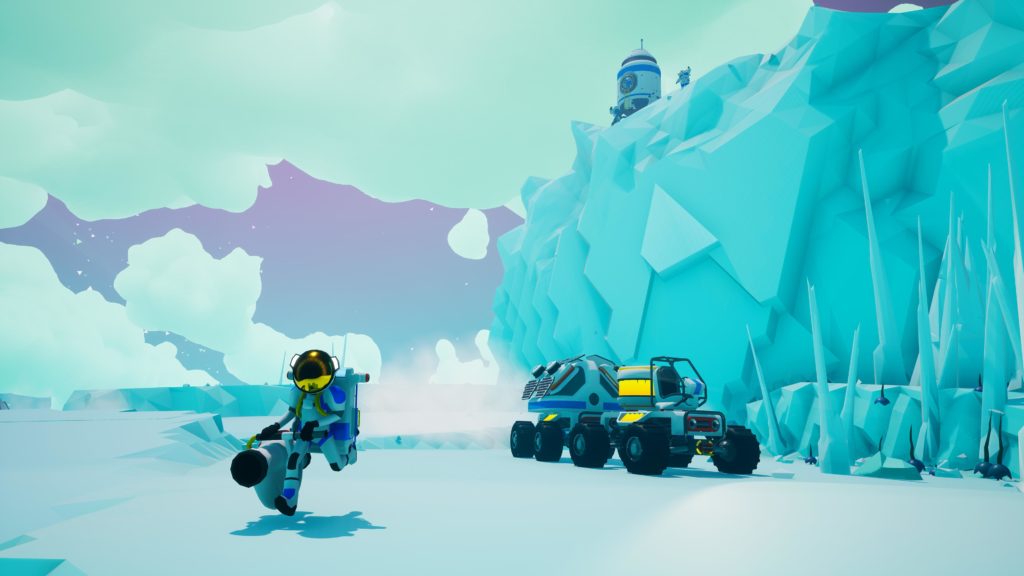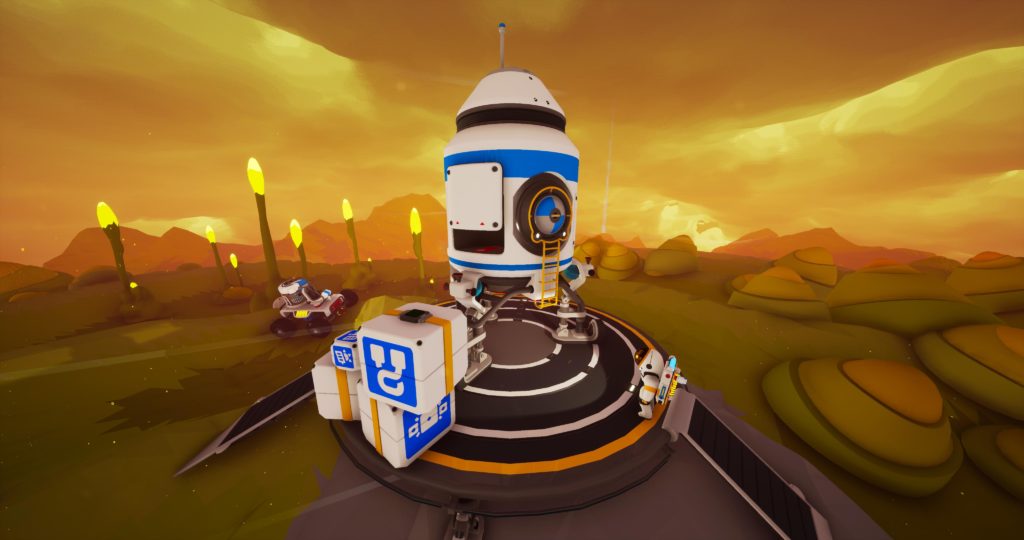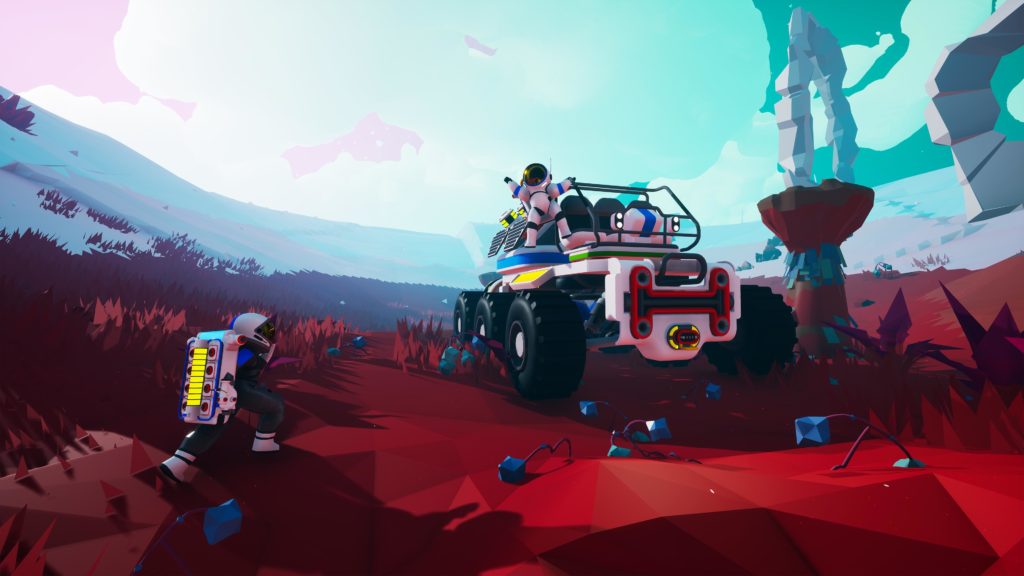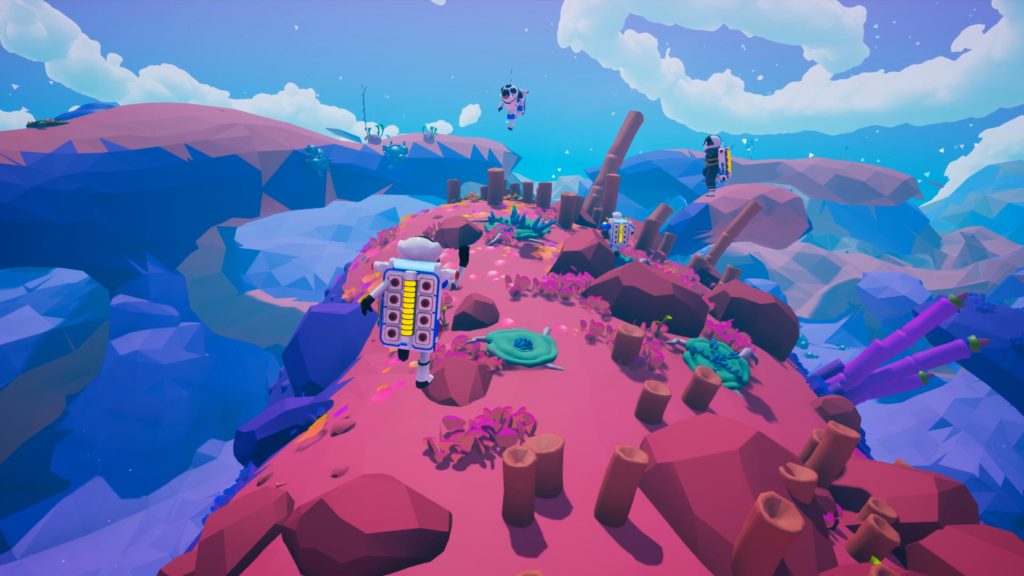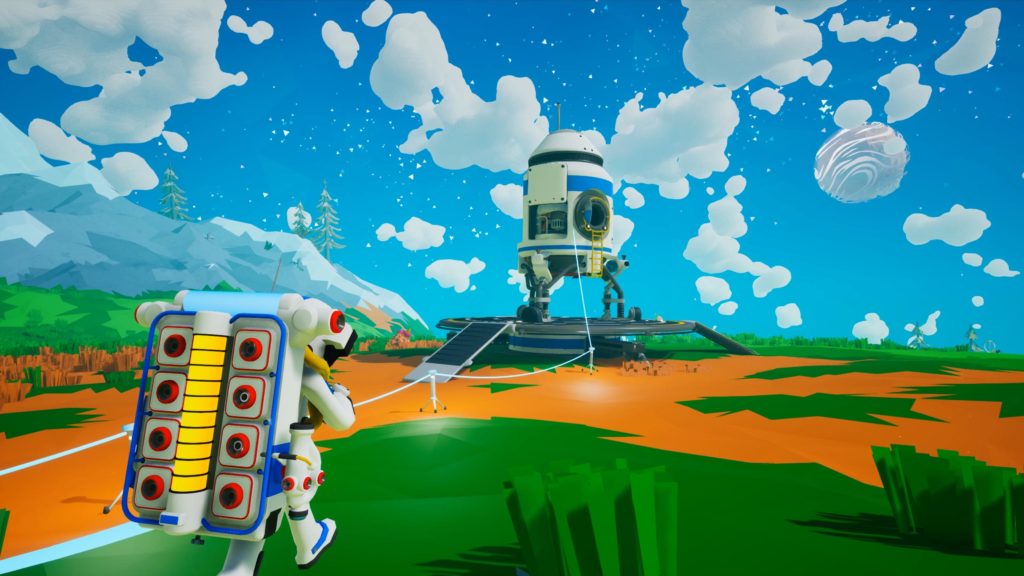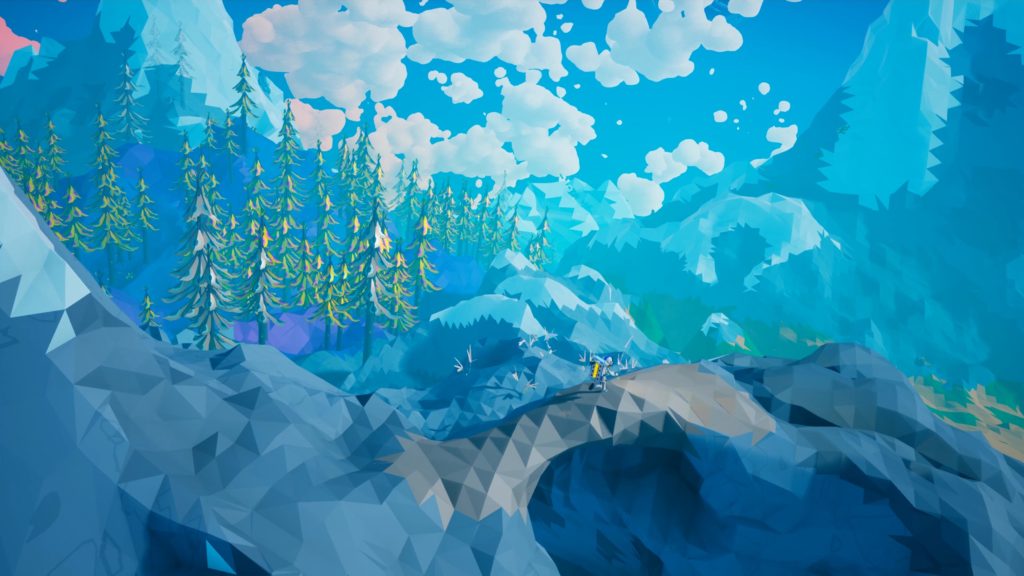Developer/Publisher: System Era Softworks || Overall: 9.5/10
Usually I don’t need to play a game for 50 hours before forming an opinion; hell, I don’t even play most games for more than 5 or 10 hours unless they’re really good. When I first started Astroneer, I didn’t think I’d stick around for very long, but as I kept playing, I realized there is a phenomenally interesting game underneath the “simple” looking graphics and gameplay in a space-themed sandbox. While you’re not going to be setting up factories for automation, you will be doing “industrial-type” crafting to gather resources and combine them to make the things you need to progress and build out your bases across the solar system.
The most appealing aspect of Astroneer is that it is almost like playing with LEGOs. There is no “virtual” inventory like many games have nowadays — all of the inventory is physical in the sense they take up actual, visual space. I’m reminded of what you are primarily doing when playing with LEGOs in real life — sifting, sorting, finding, and seeing the “same” pieces over and over, often hidden in plain sight. Even LEGO games don’t seem to care to recreate this aspect of actually playing with the physical blocks, but Astroneer does (whether or not that is intentional). As you collect hundreds of “stacks” of resources, you’ll have to figure out the best storage system, whether to leave it all on the ground in piles, or invest in storage systems and sort them by type or always hunt and peck for what you’re looking for.
A major part of the game is, of course, the exploration. The exploration is fun, despite it not being too eventful. You’ll be mostly looking for salvage or resources, and occasionally you’ll find intact equipment to use at your base. The exploration has aspects of “realism” with only a short supply of oxygen, and needing to use tethers to supply it. This is a natural limiter as you will not be able to go far from your tether line, and without proper preparation you may even get lost and lose sight of your tether line, resulting in death. You’ll need a somewhat constant supply of a resource called “Compound” to explore safely on foot. Later on, you’ll be able to get vehicles at which point you can drive pretty much wherever you want, but there is still the danger of getting lost; you’ll have to prepare and make sure you know which direction is home. Pop-ins are a significant issue, as the draw distance is not that far. This adds to the danger of “getting lost” since a tether line will disappear just 15 or so feet away, even though you “should” be able to still see it.
There are lots of different things to build for your base. Most of the equipment you’ll create needs to be mounted on a platform, with the platforms connecting to one another to loop into the power grid. Power is a big challenge in creating a constant supply and having your base and outposts work without constant intervention. You’ll be able to research new equipment with a currency called Bytes, which are extracted from Research Items. Once you’ve researched everything there is no use for Bytes, which can make Research Items a bit of a burden to haul back since they’re essentially useless and you can find multiples at a given time. They seem to be adding more equipment in updates, so I guess its worth still researching items as you come across them.
A major feature of the game is being able to deform all of the terrain and mine the planets for their resources. The terrain is buggy at times, though. If you decide to use holes to store your resources they can fall through the ground. Sometimes your vehicle gets stuck on the terrain and you have to dig it out. There are several layers of terrain to each planet, and each planet has large cave systems and a core to venture down into. Depending on the planet you are on, there are different “types” of biomes, caves, vegetation, and sets of resources to acquire. Essentially everything you see on screen can be mined.
There are 7 planets to explore, with 2 being moons. Each have their own set of resources to gather, and all look very distinct from one another. There’s a bit of overlap with the resources available, but it all depends on quantity and where it can be found on the planet. The early to mid game is all about establishing your foothold on these planets while researching everything, and finding all of the different resources you need when you need them. There is a good diversity of resources and there are also composite resources where you combine base resources to make advanced ones. Gases are also used to make these composites which forces you to explore the other planets. You can also get natural resources in alternate ways, such as through a Soil Centrifuge or through exchanging Scrap. Soil is stored in empty containers, just from deforming the terrain. Scrap is acquired through shredding broken equipment in the field, of which there is quite a lot. These alternate forms of resource procurement evens out the “random” aspect of finding important resources.
There are no game-breaking bugs that I encountered, and considering the scope of the game, that is quite a feat. One time the game kept “loading” on start up and never finished loading so I had to quit the game and restart it. Otherwise, it is stable. The game is made in Unreal Engine, as well, which is a bit surprising to me that a sandbox game used it; they are usually in Unity or a custom one. It can be very frustrating when you are trying to make a flat area to build more portions of your base on or making a ramp that is suitable for your vehicles to go up and down. There needs to be “smart” ways to accomplish these simple tasks.
I made no references to No Man’s Sky previously, but the obvious parallels are there. Astroneer is more akin to what I was originally wanting to do in No Man’s Sky — collecting all of the resources I can on a planet and sucking up all of the dirt until there was nothing left. While it’s not exactly possible to do that, you are basically doing that in a sense with Astroneer. Astroneer is just a lot of fun as a sci-fi sandbox crafting game.


